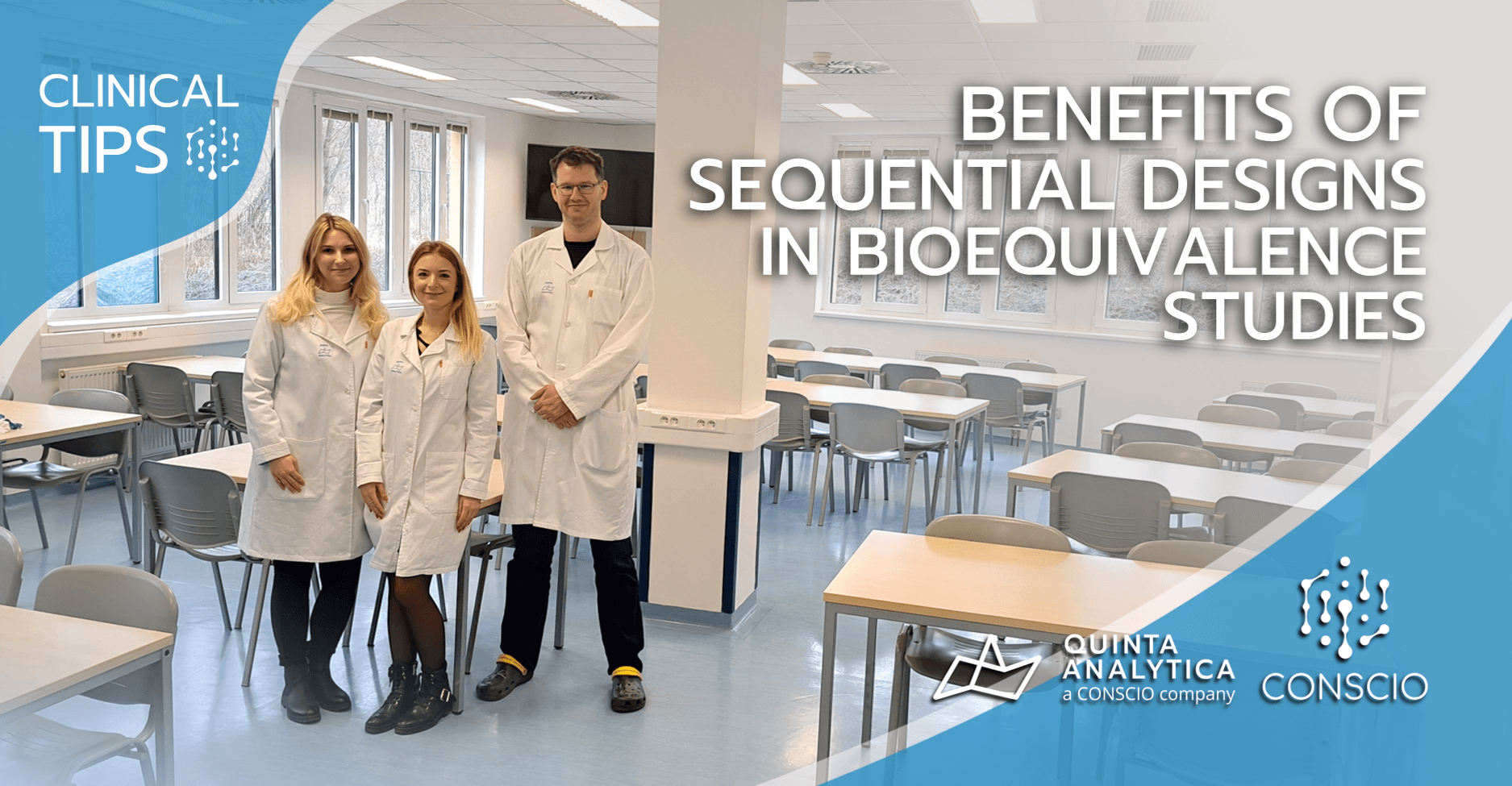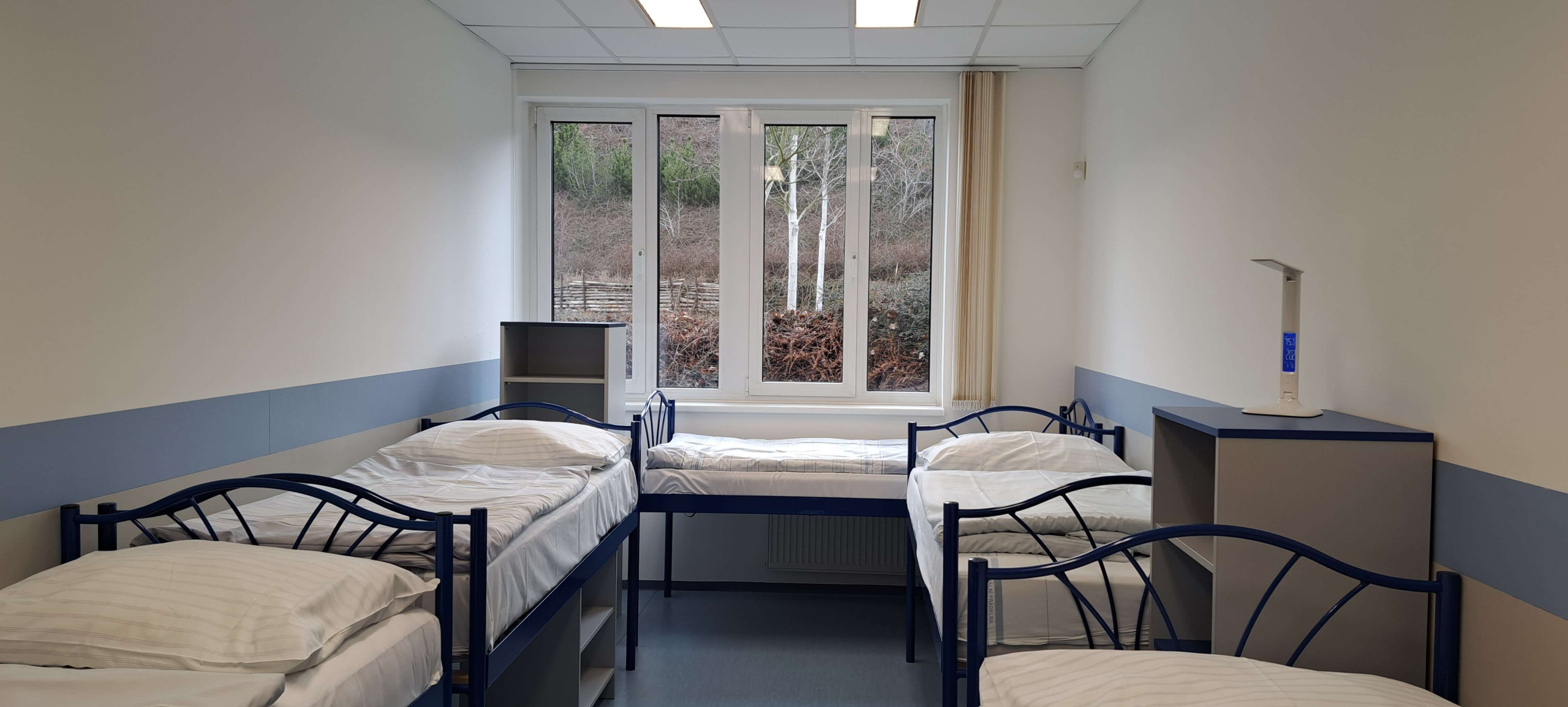
Most of our clients are well-versed with bioequivalence and comparability studies, a crucial step in the development of generic drugs and biosimilars. However, not everyone is equally aware of the various types of study designs available, such as crossover, parallel, or sequential, as well as the benefits of having a clinical team that is proficient in this area of expertise. In this article, we will explore the advantages of sequential designs for bioequivalence studies, and provide insights into their practical implementation, statistical analysis, and the well-being of the volunteers. Whether you are a pharmaceutical developer, a clinical researcher, or even if you are considering volunteering for a clinical trial, this article will provide you with a comprehensive overview of this fascinating and rapidly evolving field.
Bioequivalence studies (BE) are conducted to determine whether two drugs, typically a generic and a brand-name drug, are interchangeable or “bioequivalent” in terms of safety and efficacy. Traditionally, these studies have been conducted using either parallel or crossover designs: In crossover each subject receives both test and reference drug while in parallel designs they receive only one of the two drugs. Each design type has its own strengths and limitations, as we will soon explore. However, in recent years, sequential designs have emerged as a promising alternative that can offer several advantages over these traditional designs.
Sequential or adaptive designs are a more complex variant which involves a series of multiple treatments per subject and whose ultimate goal is minimizing the total number of subjects required. The use of sequential designs in bioequivalence trials was approved in 2010 by EMA and FDA, respectively, with the Guideline on the Investigation of Bioequivalence and the draft of the current Adaptive Design Clinical Trials for Drugs and Biologics Guidance for Industry. In this design, subjects are randomized to receive different treatments in different sequences. The study then analyzes the pharmacokinetic parameters of each treatment and compares them to a reference standard. If performed correctly, such sequential designs can permit the early termination of a trial: If the study brings positive results, no more subjects may need to be tested. Conversely, if negative results are anticipated, then the study can stop before starting another sequence and wasting more resources.
However, to fully realize these benefits, it is essential to have a clinical team that understands the implications of each study design choice. Certain designs will be more appropriate for certain types of projects or clients, depending on the nature of their drug, the specific research question, and the resources available. Generic sponsors, for example, often use crossover designs because they can be more efficient: Each subject serves as their own control, the impact of inter-subject variability in pharmacokinetic parameters is reduced, which in turn reduces the required sample size, cost and time. This can be particularly useful in situations where the population under study is small or where recruitment of subjects is challenging. Biosimilar manufacturers deal with more demanding large molecules and usually favor single dose cross-over studies with full characterization of the PK profile, including the late elimination phase. For those substances with a long half-life and/or a high risk of immunogenicity, a parallel group design might be necessary instead. Similarly, the use of sequential designs is not suitable for all cases, but here is where things can get more interesting for certain generic manufacturers:
In general, sequential designs are used when a smaller sample size is desirable, such as when the anticipated effect size is small, (the difference in PK parameters between the test and reference drug) or when the cost and time of conducting a large parallel study are prohibitive. In a sequential design, subjects are enrolled sequentially and the decision to stop the study and declare bioequivalence is made based on interim analyses of the data. This allows the study to be stopped early if it becomes clear that the two treatments are not bioequivalent, reducing the overall sample size needed to achieve the study’s objectives. In addition, when intra-subject variability is unknown or highly variable, opting for a sequential design can also be more efficient than running a separate preliminary pilot. This is because the adaptive nature of sequential designs allows for an adjustment of the sample size based on the observed variability in the data. In other words, if the intra-subject variability is found to be lower than expected during the interim analysis, the sample size can be re-estimated to maintain the desired level of statistical power.

Speaking of statistics, it is essential for clinical team members involved in designing, conducting and interpreting the results of clinical trials to have a good understanding of statistical principles and methods. The use of sequential or adaptive designs calls for careful statistical considerations throughout the process, given that the parameters of power and false positive rate need to be upheld the same as those needed for the approval of a conventional BE trial. A well-designed bioequivalence trial should have high power and a low false positive rate to ensure accurate and reliable results. Statistical simulation is done by software package and sample size is calculated for the first stage and then re-estimated for the second after interim analysis. This can be advantageous for highly variable drugs (with an intra-subject coefficient of variation or ISCV over 30%) or unknown literature variability of tested molecule. We are proficient in the design, conduct, analysis, ethical considerations, and practical challenges of such studies. We always try to help our clients with literature searches or in-house data in order to offer the most appropriate study design. Usually, when such data is unavailable, pilot studies for ISCV estimations are recommended, but a two-stage sequential design can be a fitting alternative considering that the first stage, already like a pilot, is followed by interim analysis from which variability can be obtained and sample size for the second stage re-estimated.
In conclusion, the benefits of such designs are numerous and multifaceted: By allowing for sample size re-estimation and early stopping for futility or efficacy, sequential designs improve efficiency and cost-effectiveness of bioequivalence studies. Moreover, they minimize the number of subjects needed and reduce the risks associated with clinical trials, thus enhancing ethical soundness, and the safety and well-being of the volunteers.
We at Conscio’s subsidiary Quinta-Analytica remain fully committed to the field of clinical trial design. Our clients can count on the expertise of our clinical teams to help them develop the most appropriate bioequivalence trial, tailored to their specific needs and objectives.
CONSCIO GROUP is a European leading customer-centric contract R&D service provider for the pharmaceutical industry delivering customized end-to-end drug development solutions including innovation, formulation, bioanalysis, QC and clinical solutions. For more about our clinical and PK services visit www.quinta.cz/clinical-testing, www.consciogroup.com or contact us at sales@quinta.cz.
Article by Tereza Korecká and Albert Pineda




